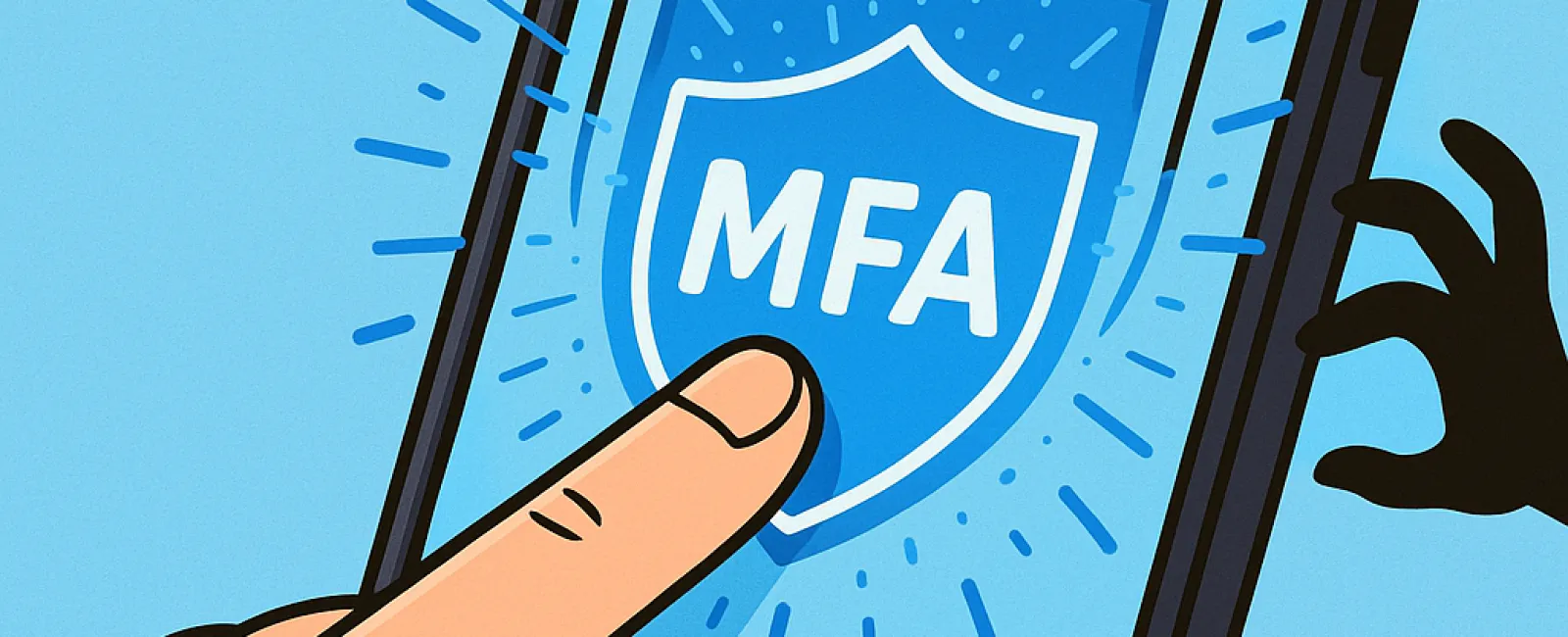October 26, 2025
Just like you wouldn't drive without buckling your seat belt or leave your office door unlocked at night, you shouldn't browse the internet without multifactor authentication (MFA) protecting your accounts.
MFA acts as an additional safeguard for your online security. Rather than relying solely on a password—which can be hacked, guessed, or phished—it requires a second verification step. This could be a text message code, an authentication app prompt, or even a fingerprint scan. So, even if someone steals your password, without the second verification, they simply cannot get in.
Your Extra Step Towards Stronger Security
Think of your password as locking your door; MFA is like setting an alarm system on top of that lock. Although not mandatory, having that second layer ensures you remain protected if one security measure is compromised.
In essence, MFA adds a simple but powerful step to verify your identity during login. Whether termed as "two-step verification," "two-factor authentication," or "one-time password," it means confirming your identity with two or more distinct steps before allowing access to sensitive info.
You've encountered MFA in various forms: confirmation emails when creating accounts, security questions for banks, text codes, push notifications, or phone calls. Most of these require nothing more than a quick tap or code entry.
How MFA Protects You in Real Situations
From your perspective, MFA is easy—just approve a message or enter a code. But for hackers, it's a major obstacle. If they try to access your accounts without authorization, MFA triggers alerts and requests extra verification, informing you of the breach and giving you a chance to secure your account before any data is stolen.
Even if a hacker tricks an employee into giving up login details, MFA prevents access without the extra step. According to Microsoft, enabling MFA decreases the risk of account compromise by more than 99.2%, and up to 99.99% when MFA is enabled on the account.
Where You Should Activate MFA
Ensure MFA is active on these crucial platforms:
- Banking and financial services apps
- Email accounts and cloud storage
- Social media profiles
- Work systems with access to client or proprietary data
Activating MFA is often simple. Most major services offer built-in options—choose the method that suits you best and incorporate it into your daily login routine. An authenticator app can enhance security, especially for employee access.
In short, MFA is a fast, cost-free defense that blocks most hacking attempts. Investing a few minutes to set it up today can prevent months or years of recovery and protect your sensitive information long-term.
The simplest way to implement MFA is by contacting your IT provider. A skilled Managed Service Provider (MSP) will guide you through the setup seamlessly. If you need expert cybersecurity support, click here or call us at 1300 765 014 to schedule a 15-Minute Discovery Call with our dedicated team now.




